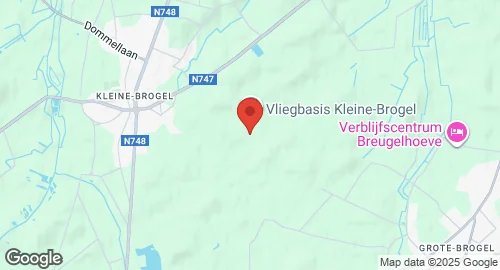Kleine Brogel Air Base
Summary
| Operating Country | 🇺🇸 United States |
| Location | 🇧🇪 Belgium |
| Status | ◉ Active |
| Usage | Military only |
| Year built | 1944 |
| Operating Organization | US Air Force |
| Units |
|
Description
Kleine Brogel Air Base, identified by ICAO code EBBL, is a military airfield situated near Peer, Limburg, Belgium. The base was constructed in December 1944 by Allied forces, specifically the British Royal Engineers, as tactical airfield B90 during World War II. It became operational in March 1945, supporting Allied operations. After the war, Allied forces departed by September 1945.
Throughout the Cold War, Kleine Brogel served as a significant air defense installation in Western Europe, hosting F-104 fighters in the 1960s and F-16 fighter aircraft in the 1980s. It was part of the Quick Reaction Alert system. The base is known for its role in NATO's nuclear sharing arrangement, storing B61 nuclear bombs in underground WS3 Weapon Storage and Security System facilities. These weapons are under a dual-key system requiring authorization from both Belgium and the United States. The United States Air Force's 701st Munitions Support Squadron is stationed here to manage these munitions.
Currently, Kleine Brogel is home to the Belgian Air Component's 10th Tactical Wing, which operates F-16AM and F-16BM Fighting Falcons, including the 31st and 349th Squadrons. The base also hosts the 701st Munitions Support Squadron, part of the US Air Forces in Europe - Air Forces Africa. In addition to its military operations, the base periodically hosts the Belgian Air Force Days, a public air show, and features the Kleine Brogel aircraft museum, established in 2010.
The air base has two runways: 05L/23R, measuring 3,095 meters, and 05R/23L, measuring 2,400 meters, both with asphalt/concrete surfaces. The base's elevation is 58.5 meters above mean sea level.
